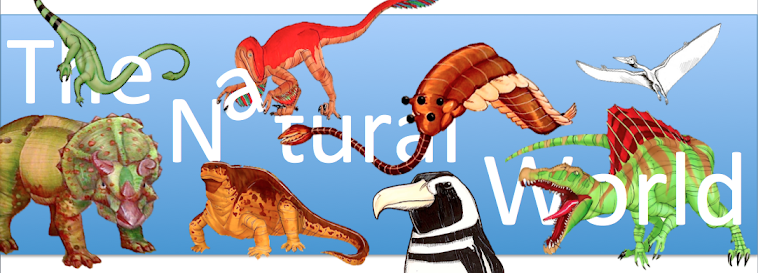The leaves of the Eucalyptus trees are incredibly hard to digest. Not only are the leaves very fibrous, much like celery (think about how hard celery is to chew), but they are also chock-full of toxins that very few animals can digest, with especially high concentrations of volatile oils and phenolic compounds. What does that mean in English? Well, phenolics are a type of organic chemical that naturally occur in plants, where they can act as deterrents against predatory browsing at the hands (or rather the mouths) of herbivores. As stated before, the concentration of phenolics in the Eucalyptus leaves are so high that most animals would simply be unable to digest the leaves. The koala decided not to take this lying down (ironic, as that is most of what koalas do in a day), and have evolved in a few key ways to help them deal with these toxins.
 |
| A fascinating moment of a koala's life: being awake. Quite the statistical anomaly. |
 |
| A koala skeleton on display at the American Museum of Natural History in New York, New York. Note the molars in the back. |
poop HERE.)
 |
| Get yours at your local King Soopers today! |
During the Pleistocene, there existed a larger species of koala, Phascolarctos stirtoni, a slightly larger koala than the modern species, P. cinereus. Based on dentary measurements of both species from Price et. al., I came up with an approximate size increase of 1.4. That is, take the length of a body part of P. cinereus, the modern koala, and multiple that value by 1.4, and you should get the approximate length of the same body part for the robust koala, P. stirtoni. Not exactly the most precise method, but one that'll work for our purposes. Below, you can see an approximate size comparison that I made of the two koalas, our modern species in gray and the extinct species in brown.
 |
| An approximate size comparison between the modern Phascolarctos cinereus (right) and the extinct P. stirtoni, with a can of Mom's Butt Leaves for scale. |
That incredible, hands-on natural history museum in scenic Morrison, Colorado never stood a chance against that koala. Fortunately, repairs to the facility should be completed on time for tomorrows 10:15 AM tour, which is included with your admission fee and well worth the time. Talk about great free advertising, am I right?
|
Works Cited:
Hättenschwiler, S., & Vitousek, P. (2000). The role of polyphenols in terrestrial ecosystem nutrient cycling. Trends in Ecology & Evolution, 238-243.
Logan, M., & Sanson, G. (2002). The effect of tooth wear on the feeding behaviour of free-ranging koalas (Phascolarctos cinereus, Goldfuss). Journal of Zoology, 63-69.
Macdonald, D. (1984). The Encyclopedia of mammals. New York, NY: Facts on File.
Nagy, K., & Martin, R. (1985). Field Metabolic Rate, Water Flux, Food Consumption and Time Budget of Koalas, Phascolarctos Cinereus (Marsupialia: Phascolarctidae) in Victoria. Australian Journal of Zoology Aust. J. Zool., 655-655.
Piper, K. (2005). An early Pleistocene record of a giant koala (Phascolarctidae: Marsupialia) from western Victoria. Australian Mammalogy Aust. Mammalogy, 221-221.
Nagy, K., & Martin, R. (1985). Field Metabolic Rate, Water Flux, Food Consumption and Time Budget of Koalas, Phascolarctos Cinereus (Marsupialia: Phascolarctidae) in Victoria. Australian Journal of Zoology Aust. J. Zool., 655-655.
Piper, K. (2005). An early Pleistocene record of a giant koala (Phascolarctidae: Marsupialia) from western Victoria. Australian Mammalogy Aust. Mammalogy, 221-221.
Price, G. (2008). Is the modern koala (Phascolarctos cinereus) a derived dwarf of a Pleistocene giant? Implications for testing megafauna extinction hypotheses. Quaternary Science Reviews, 2516-2521.
Price, G., Zhao, J., Feng, Y., & Hocknull, S. (2009). New records of Plio-Pleistocene koalas from Australia: Palaeoecological and taxonomic implications. Records of the Australian Museum Rec. Aust. Mus., 39-48.
Price, G., Zhao, J., Feng, Y., & Hocknull, S. (2009). New records of Plio-Pleistocene koalas from Australia: Palaeoecological and taxonomic implications. Records of the Australian Museum Rec. Aust. Mus., 39-48.





No comments:
Post a Comment